Which cell, the one on the left or the right is a prokaryotic cell?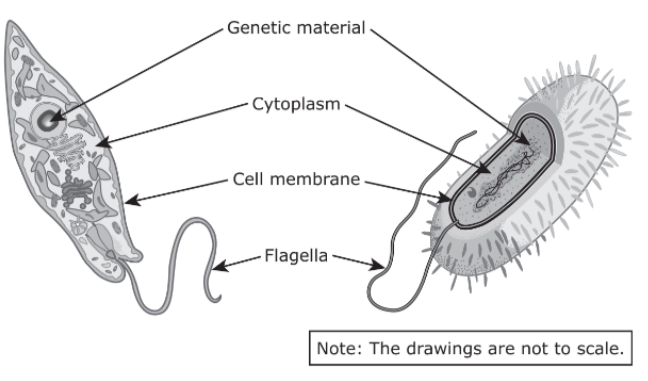
Cell differentiation is critical during embryonic development. The process of cell differentiation results in the production of many types of cells, including germ, somatic, and stem cells. Cell differentiation is most directly regulated by --
A. ATP
B. DNA
C. Lipids
D. Sugars
B. DNA
Which 2 of the following options are found in ALL living organisms?
Estrogen
Testosterone
Hemoglobin
Cytosine
Cellulose
Lymphocytes
Guanine
Chlorophyll
Cytosine and Guanine
When multiple transitional fossils are found in many rock layers, they provide evidence of --
A. seasonal variation in the diet of a species
B. gradual change of a species over time
C. DNA functioning as the genetic material of organisms
D. an unchanging environment
B. gradual change of a species over time
Genus and Species
The function of an enzyme in a biomolecule reaction is to --
A. raise the temperature of the system
B. speed up the rate of the reaction
C. increase the amount of substrate added
D. change the type of product formed
B. speed up the rate of the reaction
Invasive plant species affect the interaction of living and nonliving components of an ecosystem, so the removal of invasive species is often necessary. The goal of most plant-control methods is to disrupt of inhibit the function of different plant systems. For example, insects can be used to chew through roots in order to reduce a plant's ability to absorb water.
Which function would be most immediately impacted by a reduction in water uptake by roots?
A. disease resistance
B. seed dispersal
C. sunlight absorption
D. photosynthesis
D. photosynthesis
Which statement best describes how bacteria recycle matter in an ecosystem?
A. Bacteria are producers that create energy for second-order consumers.
B. Bacteria produce toxins to prevent the growth of invasive species.
C. Bacteria cause diseases that limit the reproduction of organisms in a population
D. Bacteria are decomposers that help to transfer organic matter to the soil
D. Bacteria are decomposers that help to transfer organic matter to the soil
What is lost to the environment at each trophic level of this ecosystem?
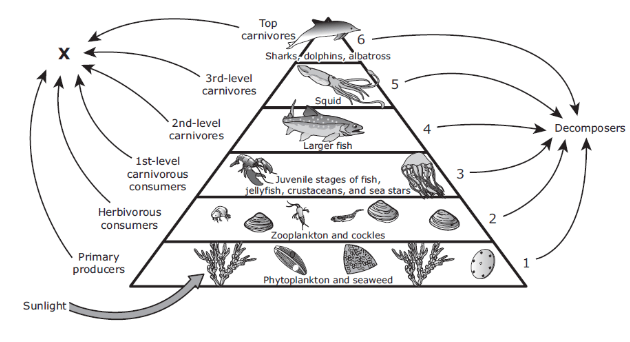
Heat
I require energy to move molecules across a membrane. What am I?
What are the complementary DNA bases to the following strand?
A-T-C-G-A-G
T-A-G-C-T-C
What process is occurring in the image below and where does this process take place?
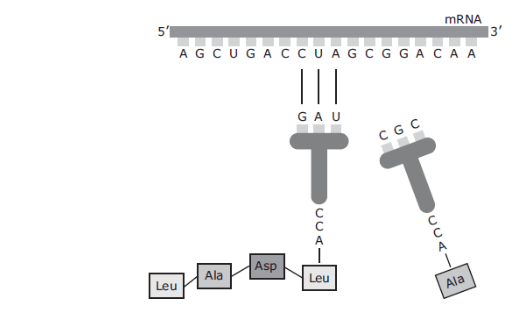
Translation and Ribosomes
Green anoles are lizards that can change their skin color rapidly in response to various stimuli. This beneficial trait that is passed down from the parents is known as a(n)
Adaptation
The Linnaean taxonomic system classifies organisms into divisions called taxa. If two organisms belong to the same taxonomic group, they are related. Similarity at which of these levels indicated the closest relationship?
A. Kingdom
B. Class
C. Order
D. Genus
D. Genus
An advertisement for a health supplement for dogs claims to build lean muscle and strengthen tendons and ligaments, as well as provide quick energy. Which two biomolecules must the supplement contain to provide these benefits?
Proteins and carbohydrates
When the skin comes in contact with an irritant, receptors in the skin send signals to the spinal cord. The signal is then sent to the brain for processing, and the individual begins to scratch the affected area.
What TWO systems are most likely interacting when a person experiences itching caused by a skin irritant.
Integumentary and nervous (see "receptors" in the question)
The table shows the predominant plant types on a piece of land in the years following a disturbance. 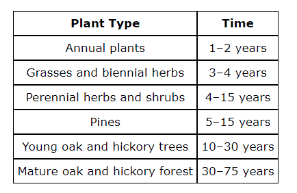 Based on the chart, which disturbance most likely led to this progression?
Based on the chart, which disturbance most likely led to this progression?
A. a glacier retreated
B. a volcanic island formed
C. a plowed field was abandoned
D. a new sand dune was formed
C. a plowed field was abandoned
Correctly identify each relationship shown in the chart below.
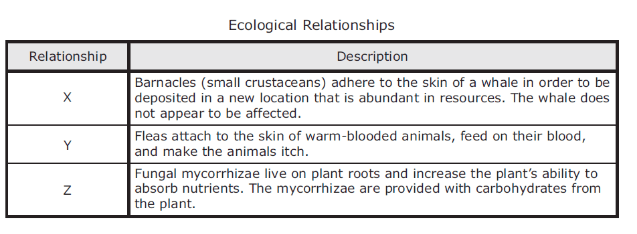
X: commensalism
Y: parasitism
Z: mutualism
What is the other product of this process?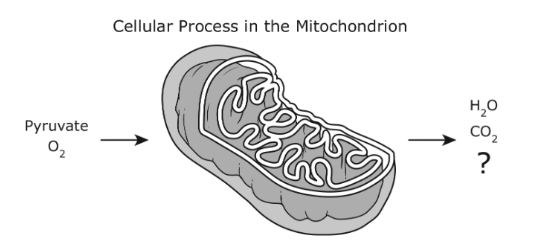
Glucose
Place the following in the order that they occur in during mitosis.
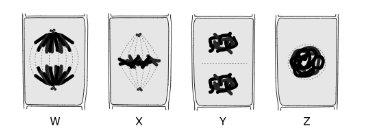
Z, X, W, Y
What type of frameshift mutation is shown below?

Insertion
Which numbered location on the phylogenic tree identifies characteristics shared by species B, C, and D?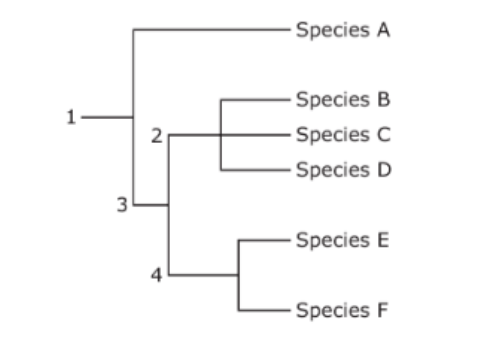
Location 2
Which mollusk moves by jet propulsion and does not have an external shell? 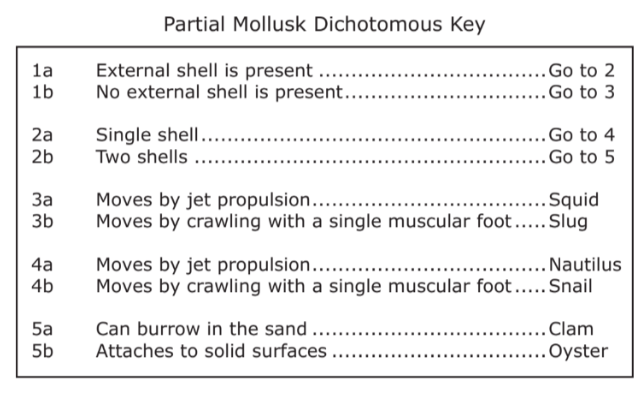
Squid
What cellular function of carbohydrates and lipids could go in the shared section of the Venn diagram.
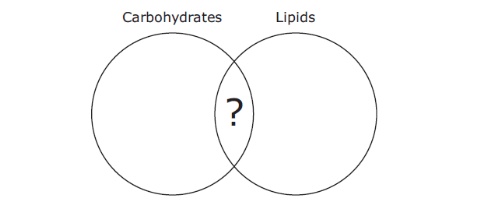
Energy storage
What two systems are directly interacting to allow vertebrates to exchange gasses?
Circulatory and respiratory systems
A student studying primary succession should focus on which of the following communities?
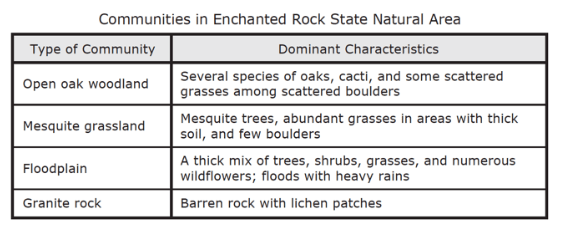
Granite rock
In a Central Texas grassland, the producers incorporate 12,000 kJ of energy from the sun into their tissues. About how much energy would be incorporated into the tissues of herbivores?
1,200 kJ
Which sample most likely contains viruses?

Sample 3.
Albumin is a protein that is produced by liver cells and transported to the bloodstream. What factor most directly determines the amino acids that are combined to create albumin?
The order of DNA bases (nucleotides).
A new mutation occurs in a somatic cells of a sexually reproducing organism, what percentage of the individual's offspring are likely to inherit the mutation?
0% (the mutation is occurring in a somatic cell and only gametes pass on genetic information to offspring)
What will most likely happen to the beetles over time? 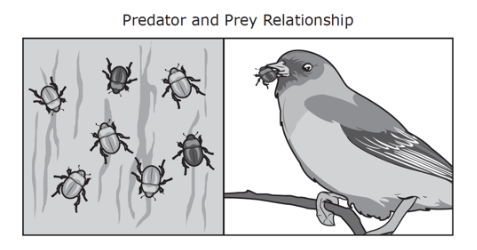
The lighter-colored beetles will increase in population while the darker-colored beetles will decrease.
Blue whales and narwhals are both mammals in the Order Cetacea. Which other classification groups (3) must these whales share?
Kingdom, Phylum, and Class
Which biomolecule contains both nitrogen and phosphate?
DNA/RNA/nucleic acids
Which system interactions are dependent on the plant's ability to respond to the direction of light.
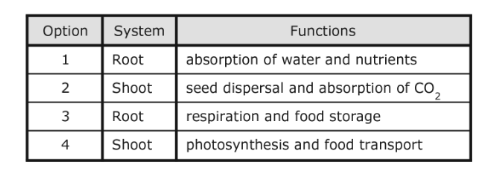
Option 4
Place the following stages of succession in order from the beginning to the end.

II, IV, I, III
Which rhinoceros species is best adapted for feeding in the large open grasslands of Africa's Serengeti ecosystem?
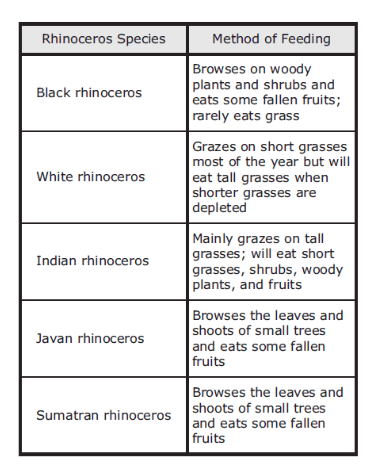
White rhinoceros
Water molecules moving across the plasma membrane until solute concentrations are equal on both sides of the membrane is known as?
Osmosis.
What is happening during stage II of the graph above if stage I contains cells massed during G1 of interphase.
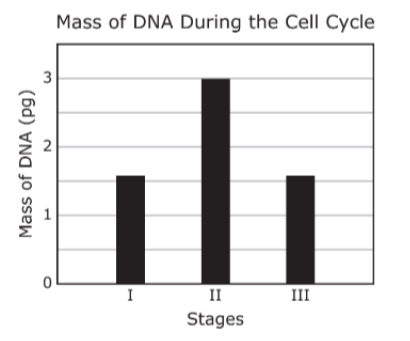
DNA is being replicated.
In domesticated dogs, hair type is controlled by two different alleles. The allele for wire hair is (H) and the allele for smooth hair is (h).
When two heterozygous dogs are crossed, what percentage of the offspring is expected to be homozygous for smooth hair?
25%
Giant octopuses lay 20,000 to 100,000 fertilized eggs. After hatching, most octopuses become pray to larger marine organisms, and less than 5% will reach adulthood to reproduce.
One benefit of the giant octopus laying many eggs is to --
Increase the chance that more individuals will survive to maintain the population.
What characteristics do all organisms in the Animal, Plant, Protist, and Fungi have in common?
All eukaryotes/eukaryotic.
What are BOTH of the products of the cellular processes of BOTH organelles?
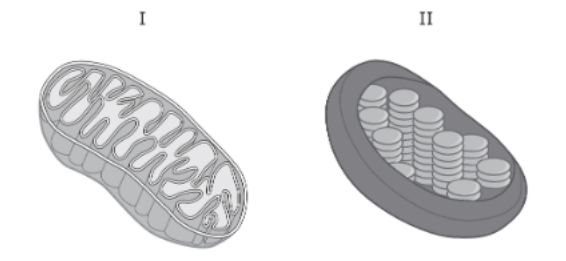
I. water, CO2
II. O2, glucose
Which student made observations of a community of organisms?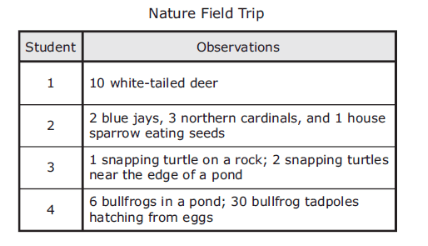
Student 2
Trichonympha are mutualistic microorganisms found in the gut of termites. Which statement best explains the relationship between Trichonympha and termites?
A. Trichonympha will eventually kill their host termites.
B. Trichonympha cause infections in termites.
C. Trichonympha steal resources from termites to live.
D. Trichonympha improve the survival of termites.
D. Trichonympha improve the survival of termites.
Which TWO populations would most likely increase as a result of a disease that suddenly reduces the population of Texas horned lizards?
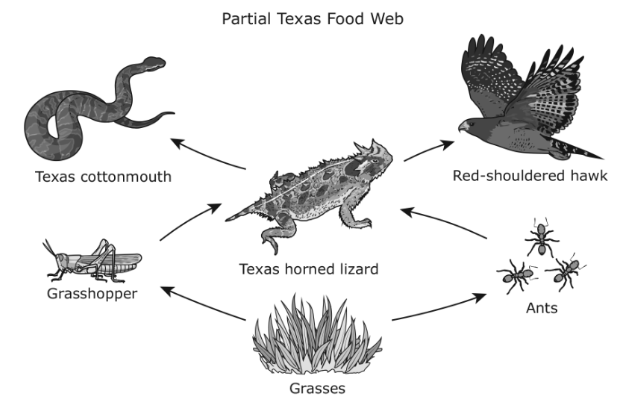
Grasshoppers and Ants